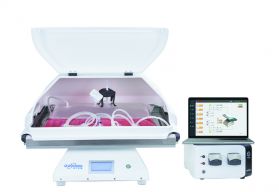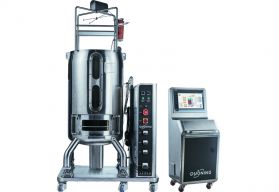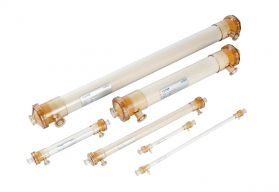Whole-virus vaccines use a weakened (attenuated) or inactivated form of the pathogen that causes disease to induce protective immunity against it. There are two types of whole virus vaccines. Live attenuated vaccines use a weakened form of the virus that can still grow and replicate, but not cause disease. Inactivated vaccines contain viruses whose genetic material has been damaged by heat, chemicals or radiation so they cannot infect cells and replicate, but can still induce an immune response.
Both are proven vaccination strategies that form the basis of many existing vaccines -- including the yellow fever and measles vaccine (live-attenuated vaccine) or the seasonal influenza and hepatitis A vaccine (inactivated vaccine). Vaccines that are attenuated from of bacteria also exist, such as the BCG vaccine for tuberculosis.
Advantages and disadvantages of live attenuated vaccines include: it is a well-established technology that induces a robust immune response involving both B and T cells; it is relatively simple to produce, but it is not suitable for people with compromised immune systems, and in rare cases may cause illness; and such products are usually relatively temperature sensitive, so careful storage is necessary.
Inactivated vaccines are also a mature technology and are suitable for people with compromised immune systems. Since they have no active ingredients, there is no risk of vaccine-induced disease; the production of this type of vaccines is relatively simple, and the products are relatively stable; however, booster immunization may be required .
Live attenuated vaccines are derived from viruses that have been weakened under laboratory conditions so that when injected they infect cells and replicate but cause no or very mild disease. However, they may not be suitable for people with compromised immune systems (such as those with HIV) and pregnant women, because even a weakened virus can cause illness in these people. Also, in rare cases, live attenuated vaccines can be reverted to a more pathogenic form, causing illness in the vaccinated individual or their contacts.
Because these vaccines are just weakened versions of natural pathogens, the immune system responds like any other cellular invader, mobilizing a range of defenses against it, including killer T cells (which recognize and destroy infected cells), helper T cells (which support antibody production) and antibody-producing B cells (which target pathogens lurking elsewhere in the body, such as the blood). This immune response persists until the virus is cleared from the body, which means memory cells have ample time to develop resistance to the virus. Because of this, live-attenuated vaccines can elicit an immune response almost as much as exposure to wild-type viruses without causing disease.
Inactivated virus vaccines also contain disease-causing viruses or parts of viruses, but their genetic material has been destroyed. For this reason, they are considered safer and more stable than live attenuated vaccines and can be given to people with compromised immune systems. Although their genetic material has been destroyed, inactivated viruses often contain many proteins that the immune system can respond to. But because they cannot infect cells, inactivated vaccines only stimulate an antibody-mediated response, and that response can be weaker and shorter-lived. To overcome this problem, inactivated vaccines are usually administered with an adjuvant and a booster immunization may be required.
Different viruses require slightly different production strategies, which means that each requires separate equipment and facilities. For example, the flu virus grows inside fertilized eggs -- which themselves must come from specialized sterile egg-laying facilities. The polio virus is grown in cell culture dishes that require different handling, while the bacteria-based vaccine is grown in large bioreactors. The growth of live pathogens also means that strict precautions must be taken to avoid viral escape.
Once large numbers of viruses or bacteria have been grown, they must be separated, purified, attenuated or inactivated, depending on the vaccine. Each of these steps requires specific equipment, reagents, and rigorous procedures to avoid and check for contamination, further increasing costs.
None
 DuoWave® Rocking Single-use Bioreactor
DuoWave® Rocking Single-use Bioreactor  DuoBioX Pro Single-use Bioreactor
DuoBioX Pro Single-use Bioreactor  Hollow Fiber Filter Module
Hollow Fiber Filter Module  DuoFill Single-Use Bulk Filling System
DuoFill Single-Use Bulk Filling System  TransInsect Series Insect Cell Culture Medium
TransInsect Series Insect Cell Culture Medium  DuoBioX® Explore Multi-Parallel Benchtop Glass Fermenter
DuoBioX® Explore Multi-Parallel Benchtop Glass Fermenter  Hydroxyapatite Chromatography Resin
Hydroxyapatite Chromatography Resin  Explosion-Proof Motor Peristaltic Pump BP301-YZ35
Explosion-Proof Motor Peristaltic Pump BP301-YZ35  Peristaltic Pump BP701-XC45
Peristaltic Pump BP701-XC45 Copyright © Shanghai Duoning Biotechnology Co., Ltd. All Rights Reserved Sitemap | Technical Support: 
Message-